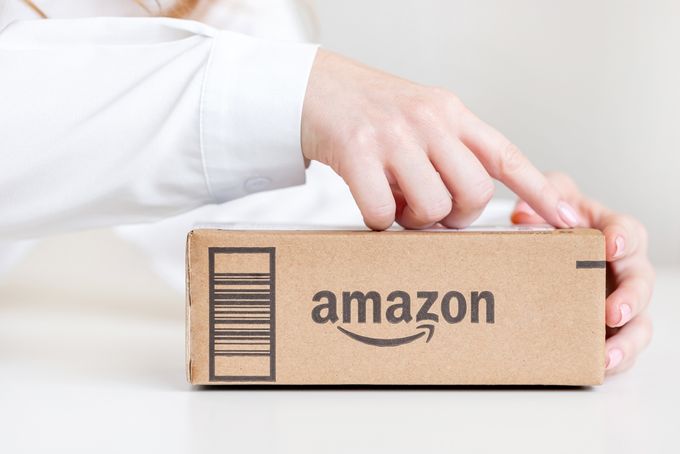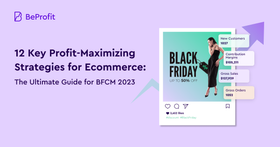Dropshipping on Amazon for Beginners—All You Need to Know
Updated April 20, 2023

Amazon dropshipping is a business model which involves e-commerce entrepreneurs selling products without having to carry any inventory, but instead using the services of Amazon for fulfillment.
Let’s disclaim the above statement by stating that “Amazon dropshipping” isn’t, by definition, technically dropshipping.
Yes, some Amazon merchants use the platform’s fulfillment services to fulfill customer orders. However, unlike the traditional dropshipping model where suppliers do not charge a fee for fulfillment (the cost is added to the price of the wholesale product), Amazon merchants that use the platform to deliver have to pay Amazon for customer order fulfillment.
How Does Amazon Dropshipping Work?
Just like the traditional dropshipping model, when a store owner receives an order from a customer, they simply contact the supplier (Amazon), who then ships the products directly to the customer’s door.
The difference between Amazon and traditional dropshipping?
Amazon dropshipping involves signing up for Fulfillment by Amazon (FBA) program and using these services to fulfill customer orders. FBA is a service offered by Amazon that allows sellers to store their products in Amazon's fulfillment centers, and Amazon will pick, pack, ship, and provide customer service for these products. Sellers who use FBA can set their own shipping rates, track their inventory, and access Amazon's customer service.
You can think of FBA as a just-in-time (JIT) supply model. A JIT supply model is a system in which suppliers produce just enough inventory to meet current customer demand. This system relies on frequent and accurate forecasts of customer demand in order to ensure that the correct amount of inventory is produced. It also relies on quick and efficient distribution channels so that the right products are delivered to the right customers at the right time.
Cost of Dropshipping on Amazon
The cost of dropshipping on Amazon varies depending on the scale and breadth of your business operations. Essentially, there are two payment plans that Amazon charges merchants for their FBA services. The first is a flat fee of $0.99/item sold + additional shipping fees. This is used for merchants that are selling 40 items or fewer per month. The second costs $39.99/month + additional shipping fees.
The additional shipping fees vary depending on the weight, size, and destination of a package. For a full breakdown of these fees, see Amazon’s FBA fulfillment fee guide.
So is using FBA affordable?
Again, that depends on the circumstance. For instance, if an online business is renting a third-party warehouse in an expensive area, shipping costs are high, and inventory management fees are added on top; thus, the cost (and hassle-free services) of FBA starts to look rather attractive. Although, if an online business is relatively small, localized, or a merchant is happy to take on fulfillment with flat-rate shipping to save costs, FBA services can start to seem a little less attractive.
To really hone in on the costs of operations compared to profit margins, see our guide on the best profit calculators for Amazon.
Additionally, this is only one way of selling products on Amazon. Read our guide on Amazon FBA vs FBM to learn more.
Pros and Cons of Dropshipping on Amazon
We’ve touched on the downside of fees and the upside of convenience, but there are other pros and cons that online merchants should take into consideration when choosing whether to use Amazon as a dropshipping option.
Pros
- Increased sales and visibility One of the biggest benefits of using FBA is the increase in sales and visibility you'll enjoy. When customers search for products on Amazon, they are more likely to find your items if they are sold through FBA than if they are sold through a third-party seller.
- Prime members love FBA Prime members love buying products that are sold through FBA because it means that they can get free two-day shipping on those items.
- Increased customer satisfaction Since Amazon is known for its excellent customer service, using its fulfillment services can help increase customer satisfaction rates for your products.
Cons
- Some products are competitive One downside of using FBA is that your products may be less visible to shoppers on Amazon since they are competing with larger brands that are well established in the marketplace.
- Business operations are dictated by Amazon Another downside is that Amazon has a lot of rules and regulations that sellers must follow. If you don’t comply, your account could be shut down.
To bypass the competition, learn how to promote your Amazon products on the marketplace successfully. Something else that might interest you: our guide on Shopify vs Amazon to help you decide whether this is the right platform for you.
» Learn how to use a formula to calculate your Amazon ROAS







